My cellphone alarm goes off at 5:00 am. I have spent the night close to The Wave trailhead at the BLM camp, surrounded by rugged beauty and scruffy Juniper and Pinyon pine trees.
It’s a lonesome spot, with only two other campers, young men and obvious hikers, setting up camp at a distance. I sleep with the van doors wide open, allowing the starry sky to fill my dreams as I drift off to a restless sleep in the Arizona-Utah summer heat.
That day, I drove my van along the short, gridded gravel road, gingerly easing it over dips and bumps. Items I thought were secured rattled and shook loose, skidding merrily around the van. It’s been a hot and dusty day and night.
In the morning, I’m in a hurry to leave this isolated campsite and find a spot to pick up WiFi to find out if my lottery application to hike The Wave has been successful. At five o’clock, I make coffee as the sun is about to peep over the surrounding red rock mountains. I’m checking my watch. My alarm goes off again at 5:00 am, but it’s 6:00 am. I am literally on the Utah-Arizona border, and my cellphone is jumping between the time zones one hour forward and one hour back. I pack my van between time zones.
Securing a permit to hike The Wave is no simple task. I’m in the running for the daily lottery permit, which opens at 6:00 a.m., two days before the available hike date. If I’m fortunate enough to win, I must accept the license, pay fees by 8:00 am Utah time, and be onsite at a permit pickup location at 9:00 am local time for a safety briefing the day before the hike. It’s a process, and I am confident that the next day, I will be waking up at 5:00 a.m. to start the hike.
I manoeuvre my van gently through a rough ditch and up a crest onto the gravel road, over the Utah border, and back into Arizona. Aha! There’s Wi-Fi.
My application for a lottery permit is unsuccessful.
It’s six in the morning in Arizona and 5:00 am in Utah.
My plans, now awry, and not knowing what to do with the rest of my day, I slowly backtrack on the gravel road I arrived on. I pass the trailhead. Freshly showered and eager hikers are slathering on sunscreen, tying laces, and making last-minute adjustments to their backpacks as they spill out of 4X4s. I survey them with tweezer-lipped envy. The parking lot is filling up fast, and everyone is eager to get a head start and beat the day’s heat.
Happy hikers wave at me with anticipatory smiles as I pass them on the road. I head for the nearest town.
“Kanab, Where Adventure Meets Retro,” says a shabby sign. I hardly notice it. I pull into an empty parking lot, make coffee, flop on my bed, and consult with Mrs Google. She informs me that a nearby RV Park has WiFi, hookups, and a swimming pool at pretty reasonable rates. So I take my grump-self to the sanctity of said Swimming Pool and WiFi.
I’m in Kanab for two nights. This little-known town, where John Wayne spent eight months a year for about ten years during his heyday movie career, is a charming find in the desert, true to the billboard, “Where Adventure Meets Retro.” Kanab is a delightful one-street city centre, combining antiquity, minimalist coffee shops, and eccentric restaurants.
I spend the afternoon at the pool with John and Ellen—retired New Yorkers about my age. Ellen was an elementary school teacher, and John was a New York firefighter. Yes, he was on duty and present at the Trade Center, working alongside his colleague on that fateful day on September 11, 2001, when two airplanes struck the towers, causing them to implode into dust. John goes quiet when I ask him about the day. It is not a memory he wants to revisit, and the trauma sits deep inside him. “I worked for another ten years after 9/11, but it was never the same. Everything changed on that day. I can’t go back to the site.”
We change topics and start joking about the current political situation. John wants to go to Portugal if Trump wins, and Ellen says she will head to Vancouver to find sanctuary. I offer them my spare room as refugees. However, buoyed by Kamala Harris, there is a wave of optimism in the USA. We swap email addresses.
I drive to the Moqui Cave, advertised as a natural history museum featuring Native American artifacts and an extensive collection of dinosaur tracks. Once inside, I discover the kitsch vision of the late Garth and Laura Chamberlain, who purchased the cave in 1951 and turned it into Southern Utah’s first dance hall and bar. Andy, a personable young man with a round face, reddened by the sun and framed by straight blonde hair, gives me the seven-dollar tour rundown.
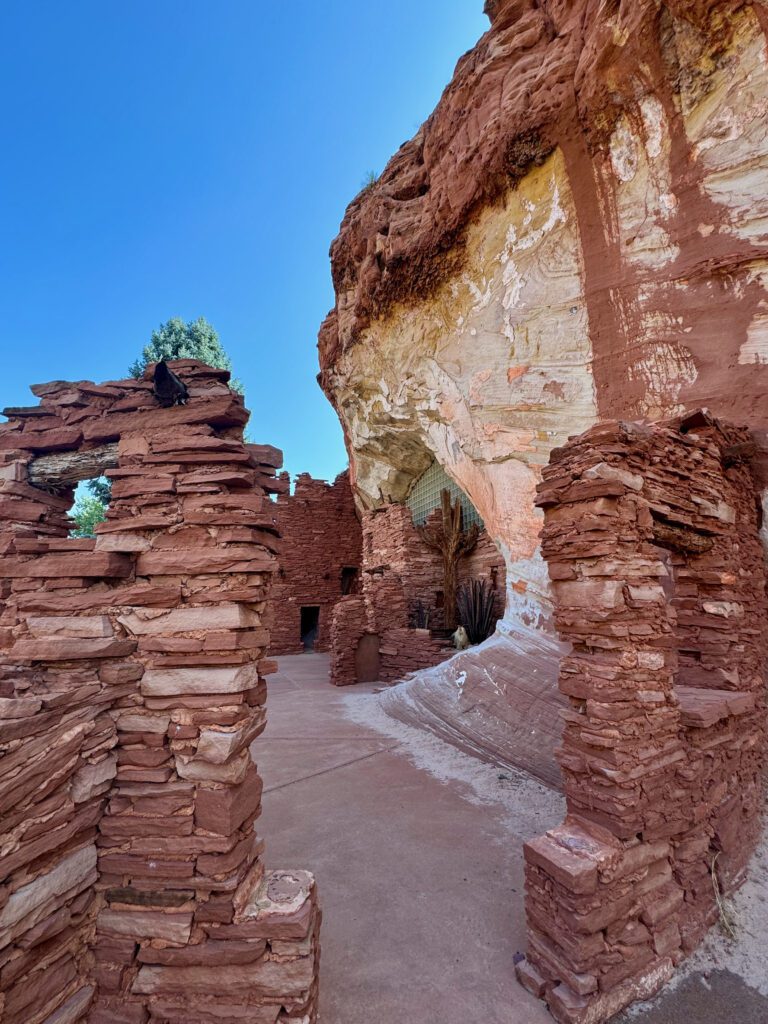
Garth Chamberlain studied Geology, Archaeology, and Paleontology. The exhibits are his personal findings after years of researching and collecting. They include more than 1,000 arrowheads, ceremonial points, jugs, pots, bowls, and working tools from the Puebloan Era. There is a sizable collection of dinosaur tracks and fossils, most of which he found in the surrounding area, and his exquisite fluorescent mineral displays are one of the largest in the U.S.
But, it is the bar that holds the mystique.
For almost forty years, Kanab was a Hollywood go-to location for shooting cowboy movies. Garth built the bar in Utah, an alcohol-dry Mormon state, as a drinking hole for Hollywood actors and crews. Throughout the town, historical placards take you through the history of cowboy movies and their stars filmed in Kanab. Some names are familiar, but Cowboys and Indians have never been my favourite movie genre. They were always desolate stories, filled with blood-curdling cries, dead bodies and the final shoot-out in some God-forsaken town like Kanab. The heroes were all dirty, sweaty men in need of a hot bath, seated on badly treated and unloved horses, and the search for water and vengeance always left me feeling like I had sat through a bewildering nightmare.
When I was about seven years old, Andrew and Philip Donaldson came to play with my sister Lisa and me at our home at 4 Gilbert Street, Grahamstown (now Makhanda). My sister had a childhood crush on Andrew Donaldson, and for some reason, his younger brother, who was in my Grade 1 class at Oatlands Primary School, escorted him on this innocent date. Andrew and Lisa, being older, got to be the cowboys. Philip and I were relentlessly pursued through our vast garden, hiding behind bushes and water tanks. But knowing that the only ending would be us, as a couple of dead Indians, we got bored quite quickly. The inevitable is not that much fun.
Standing in Moqui Cave, Andy tells me stories of the great movie legends who drank at Garth’s Bar, built into this high cave tucked away from the relentless heat and disapproving eyes of the Morman folks. Once, in times forgotten, Anasazi people used the cave as a shelter for food stores.
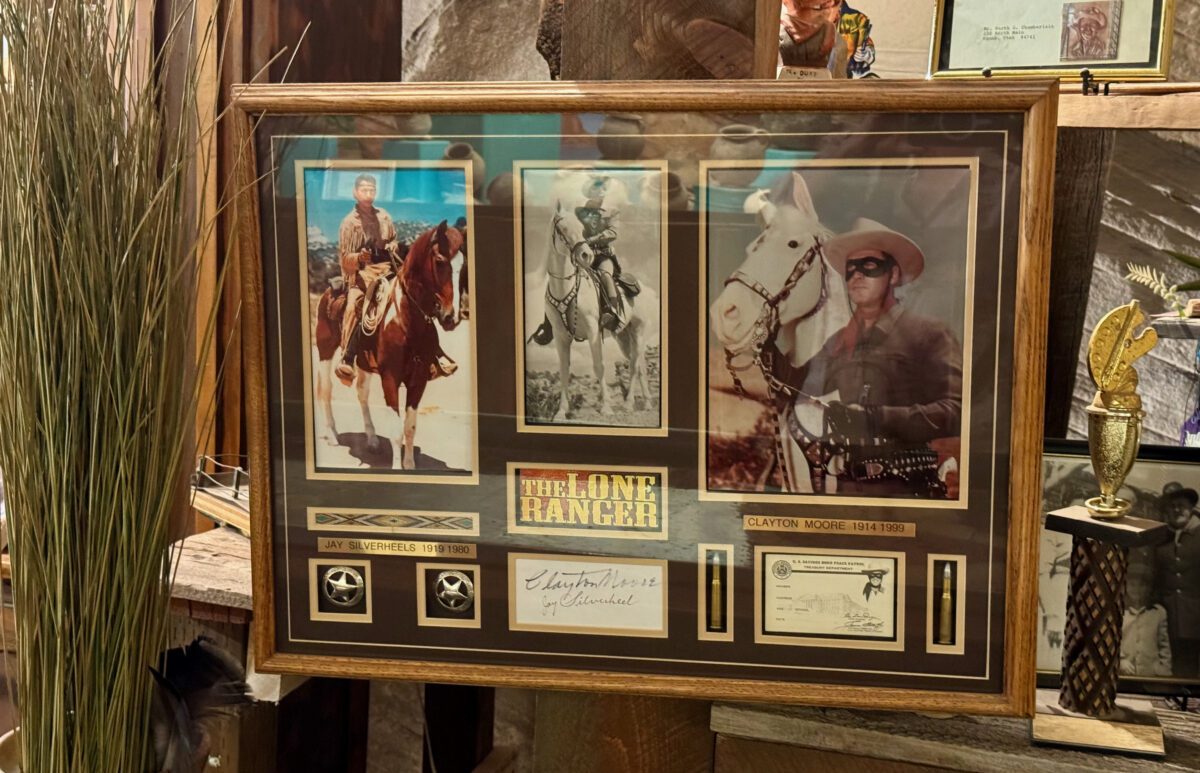
We stand admiring the bar. Andy asked me if I am a fan of John Wayne and if I would like to sit in the chair that John Wayne sat on. I think about my answer. “I have mixed feelings about John Wayne.” My mind is swirling with the complexity of Hollywood’s colonists’ scripting of a history in which the Indians were the bad guys, the white cowboys were the good guys and John Wayne, in the name of manhood and honour, never missed a shot.
‘Do you read? ‘ I ask. He gives me a bemused shrug as if to say, “This is the answer to my question?”
“One of my favourite novels is Green Grass, Running Water by Thomas King,” I persist. “I read it twice.” Andy waits expectantly. I give up. It’s too complicated to explain how this powerful novel floats between story and folklore, wrapped in humour, and that John Wayne (spoiler alert) ends up dead and the Indians ride away in triumph. How do I explain how this novel soothed my childhood neurosis of dead Indians and cowboy bullies and rewrote the many cowboy tales of my childhood?
All this goes through my mind as Andy politely and expectantly waits for me to answer his question: “Would you like to sit on the chair that John Wayne sat on?” I realize that this is too complicated for Andy at this moment.
“Because my joke is,” he continues good-naturedly, “you can sit on any of the eight chairs. John Wayne sat on them all. That drunk spent a lot of time here.” We both laugh appreciatively.
After the tour, I visit the short and kitsch dinosaur display and extraordinary glow-in-the-dark rocks. I wander through the gift shop, which sells an array of “Native American arts and crafts, rugs, pottery, and turquoise” and a wide variety of fossils, rocks, crystals, candles and soaps, caps and T-shirts, and ugly coffee mugs.
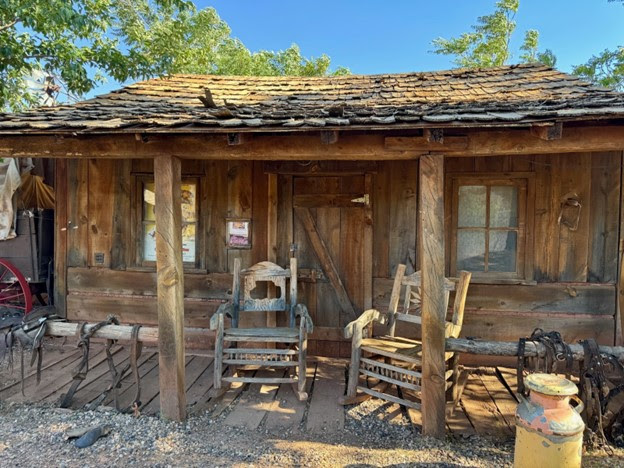
Back in town, I roll past the old retro cars, Hollywood Museum, beautiful old stone homes and neglected modern houses, their yards crowded with junk. I had a blast in Kanad.
Here are a few things I recommend you do if you ever go to Hollywood’s forgotten desert town in Utah.
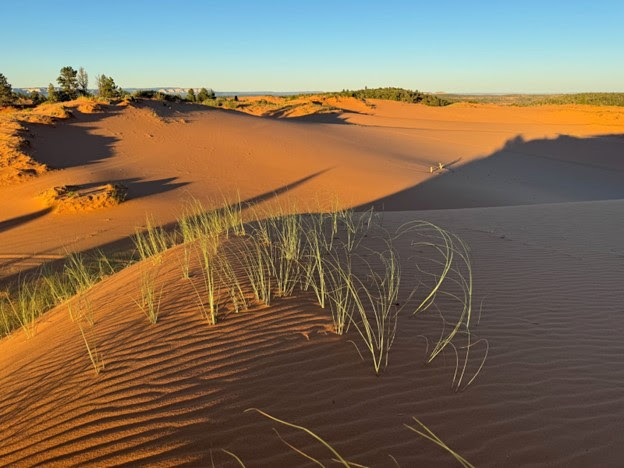
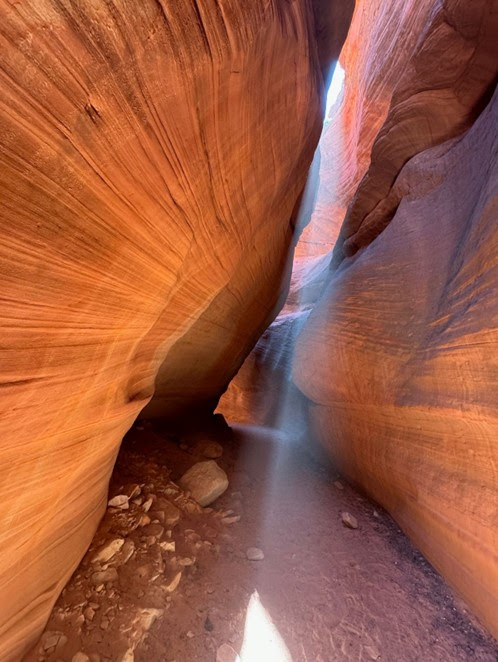
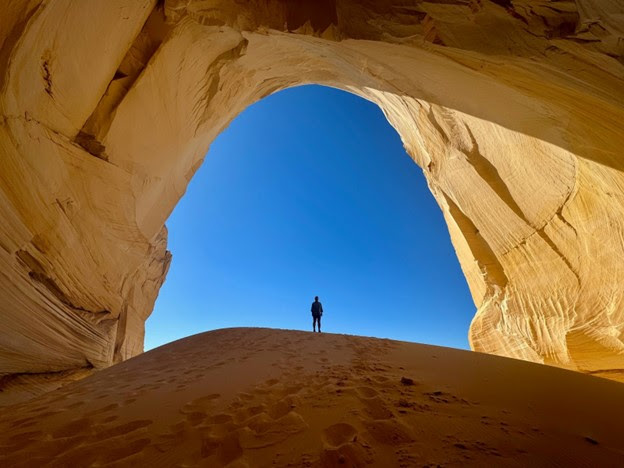
Note: Peek-A-Boo Slot Canyon and the Great Chamber can only be accessed with a 4×4 vehicle. Peek-A-Boo Slot Canyon is a relaxed stroll, but the short hike to the Great Chamber requires stamina.
About the author:
Julie Coghlan-Smith is a senior consultant with thirty years of experience in communications and an extensive background in video production and directing, my expertise includes conducting thorough research and discovering relatable and engaging approaches while maintaining the integrity of stories. Her ultimate goal is to deliver exceptional work.
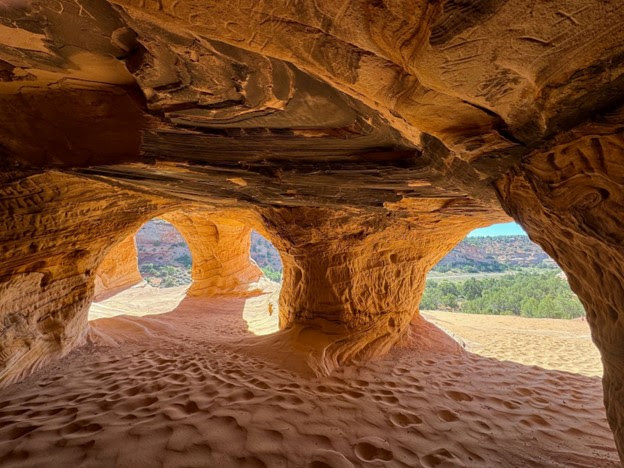


Leave a Reply
You must be logged in to post a comment.